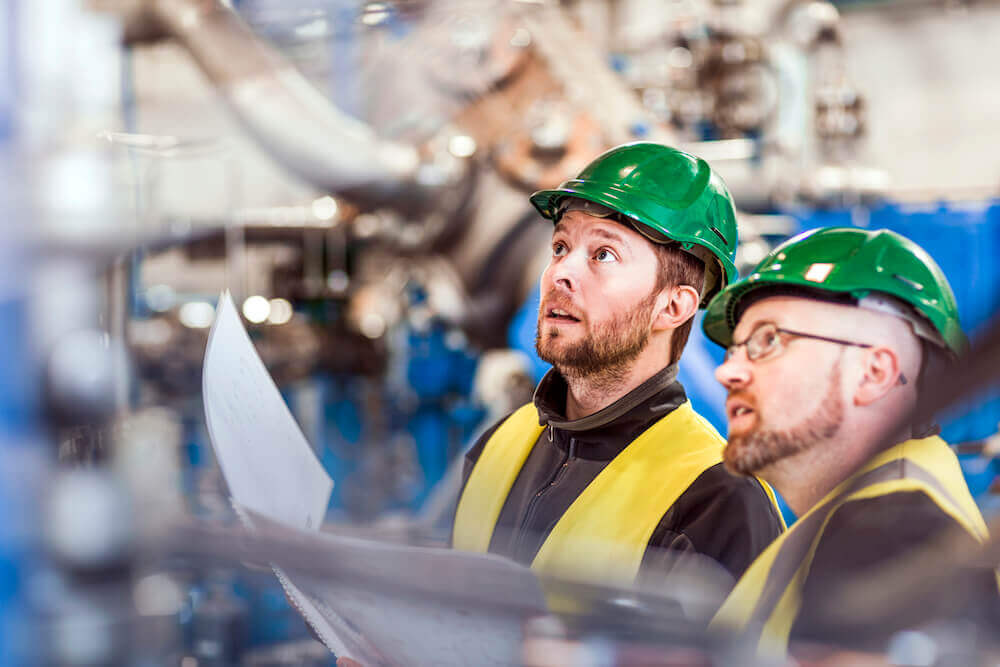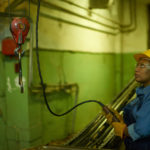Which Type of Overhead Crane Do You Need?

No matter the job, there’s a crane to get it done.
Cranes can keep your job site safe, as they eliminate the amount of manual labor required to do the heavy lifting.
Depending on the project requirements and parameters, there’s much to choose from on the market. There are four types of overhead cranes alone — not to mention the many other classes such as jib cranes, tower cranes, harbor cranes, railroad and vehicle-mounted cranes and much more.
Here are a few of the most popular overhead crane types, functions and advantages so you can make an educated decision for your next project.
Bridge Crane
Bridge cranes are typically the largest capacity and profile cranes in the overhead crane market. A bridge crane spans between two elevated supports (runway beams), and the designs include double-girder bridge cranes and single-girder bridge cranes.
Request a quote for cranes and crane kits >
Double-Girder Bridge Crane
A double-girder bridge crane is an optimal choice if your job requires a lot of wide leg width, high working speed or the need to frequently move a large load.
A double-girder bridge crane can either have a top-running or an under-hung trolley/hoist. The trolley moves the load back a forth across the bridge span, and the hoist lifts the load.
In a double-girder bridge crane, the runway beams are the I-beams that run perpendicular to the crane itself and support the crane on each side.
The crane has a hoist which is supported on top of the bridge girders. This means the crane has a top-running trolley/hoist, as featured to the right.
A double-girder bridge crane with an underhung trolley/hoist is like a top-running double-girder bridge crane in that it relies on I-beams to support the crane on each side.
However, the hoist is not built as part of the trolley like it is in the top running double-girder bridge crane. Instead, the hoist is hung from the trolley either by a lug or hook, as featured in the picture to the left.
Single-Girder Bridge Crane
A single-girder bridge crane uses a single bridge girder, two end trucks and a trolley hoist that runs along the bottom flange of the bridge girder. Single-girder bridge cranes are lighter and more flexible than double-girder bridge cranes.
A single-girder bridge crane uses only one bridge beam. Like a double-girder bridge crane, a single-girder bridge crane can have top-running or underhung trollies.
The picture above shows a top-running single girder bridge crane with underhung trollies. The hoists featured on this crane are not built as part of the trollies, and they can be separated from the trollies.
Gantry Crane
A gantry crane has two legs that support a girder, which spans over the area between the legs. Gantries usually have underhung hoists, as seen in the picture to the right.
Gantry cranes look and function similarly to bridge cranes, except they have legs that extend down to wheels on the ground, which support the load.
A gantry crane is completely self-supporting and doesn’t need an elevated runway like bridge cranes do.
Some gantries, like the one in the picture above, have a track on the floor that the gantry travels along. However, most smaller gantry cranes do not have tracks — instead, they have swiveling casters that provide mobility on any smooth, hard, level surface.
Jib Crane
A jib crane has a boom which extends out over the project area and swings to move a load within the circular area under the boom. The trolley to which the hoist is mounted runs in or out on the boom.
The picture above shows a freestanding jib crane. The term “freestanding” means the jib crane has its own support column on which it’s mounted. The boom on this crane can rotate 360 degrees.
Freestanding jib cranes often require a reinforced concrete foundation under the column to serve as a counter-weight for the load.
Other types of jib cranes include Cantilever jib cranes, wall-mounted jib cranes and column-mounted jib cranes. These other types of jib cranes are not capable of 360-degree rotation, however, they also do not take up any floor space because they are mounted to an existing wall or column.
Find out how often you need to have your crane inspected >










